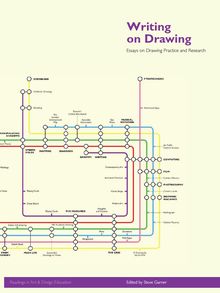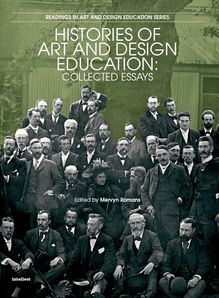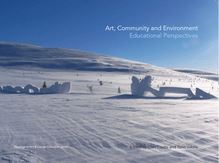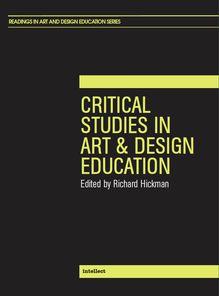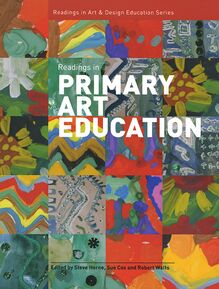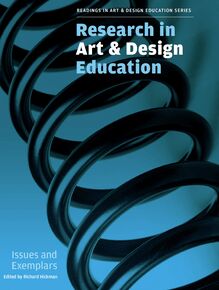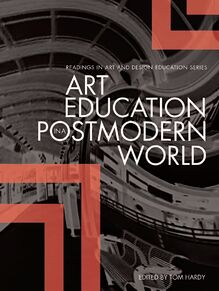-
 Univers
Univers
-
 Ebooks
Ebooks
-
 Livres audio
Livres audio
-
 Presse
Presse
-
 Podcasts
Podcasts
-
 BD
BD
-
 Documents
Documents
-
- Cours
- Révisions
- Ressources pédagogiques
- Sciences de l’éducation
- Manuels scolaires
- Langues
- Travaux de classe
- Annales de BEP
- Etudes supérieures
- Maternelle et primaire
- Fiches de lecture
- Orientation scolaire
- Méthodologie
- Corrigés de devoir
- Annales d’examens et concours
- Annales du bac
- Annales du brevet
- Rapports de stage
La lecture à portée de main
Vous pourrez modifier la taille du texte de cet ouvrage
Découvre YouScribe en t'inscrivant gratuitement
Je m'inscrisDécouvre YouScribe en t'inscrivant gratuitement
Je m'inscrisEn savoir plus
Vous pourrez modifier la taille du texte de cet ouvrage
En savoir plus

Description
Academics, artists and critics focus on specific practices and broader contexts for cultural production, highlighting the work of artists in the former Soviet and East European bloc and in the West. The collection reveals that some practices have not changed, and that in a world of globalized consumption, art and theory are not as liberated as first supposed. New practices are discussed: collaborative efforts by groups of artists, and the emergence of dissident art that subverts and challenges the institutional structures of the art world. Art and Theory After Socialism is a unique re-investigation of the overlap of art and everyday life in a post-Cold War world.
Sujets
Informations
| Publié par | Intellect Books Ltd |
| Date de parution | 01 septembre 2008 |
| Nombre de lectures | 0 |
| EAN13 | 9781841502588 |
| Langue | English |
| Poids de l'ouvrage | 3 Mo |
Informations légales : prix de location à la page 0,1900€. Cette information est donnée uniquement à titre indicatif conformément à la législation en vigueur.
Extrait
Art, Community and Environment
Educational Perspectives
Art, Community and Environment
Educational Perspectives
Edited by Glen Coutts and Timo Jokela
Series Editor: John Steers
First Published in the UK in 2008 by Intellect Books, The Mill, Parnall Road, Fishponds, Bristol, BS16 3JG, UK
First published in the USA in 2008 by Intellect Books, The University of Chicago Press, 1427 E. 60th Street, Chicago, IL 60637, USA
Copyright 2008 NSEAD
All rights reserved. No part of this publication may be reproduced, stored in a retrieval system, or transmitted, in any form or by any means, electronic, mechanical, photocopying, recording, or otherwise, without written permission.
Series: Readings in Art and Design Education Series Editor: John Steers
A catalogue record for this book is available from the British Library.
Cover Design: Gabriel Solomons Copy Editor: Holly Spradling Typesetting: Mac Style, Beverley, E. Yorkshire
ISSN 1747-6208 Paperback ISBN 978-1-84150-257-1 Hardback ISBN 978-1-84150-189-5 EISBN 978-1-84150-258-8 Printed and bound by Gutenberg Press, Malta.
C ONTENTS
Acknowledgements
Preface
Introduction
Glen Coutts and Timo Jokela
Part One: Environments
Chapter 1: A Wanderer in the Landscape: Reflections on the Relationship between Art and the Northern Environment
Timo Jokela
Chapter 2: Developing an Environmental Aesthetic: Aesthetics and the Outdoor Experience
Angus McWilliam
Chapter 3: Strategies for the Convivial City: A New Agenda for Education for the Built Environment
Malcolm Miles
Part Two: Communities
Chapter 4: Beyond Process: Art, Empowerment and Sustainability
Mark Dawes
Chapter 5: Community Art Projects and Virtual Learning Environments
Maria Huhmarniemi
Chapter 6: Community-Based Art Education in the North: A Space for Agency?
Mirja Hiltunen
Chapter 7: Crossing the Line
Sarah Bennett
Part Three: Education
Chapter 8: Art and Design Education and the Built Environment
Eileen Adams
Chapter 9: Connections between Public Art and Art and Design Education in Schools
Eileen Adams
Chapter 10: Art, Design and Environment: A Programme for Teacher Education
Eileen Adams and Tony Chisholm
Chapter 11: Training Community Artists in Scotland
Julie Austin
Chapter 12: Community Art: What s the Use?
Glen Coutts
Chapter 13: Collaborative Project-Based Studies in Art Teacher Education: An Environmental Perspective
Timo Jokela
Chapter 14: Hard Lessons: Public Sculpture and the Education System in Nineteenth-Century Glasgow
Ray Mckenzie
Chapter 15: Living City : An Experiment in Urban Design Education
Les Hooper and Peter Boyle
Chapter 16: Using Multimedia to Teach Young People about Public Art in Glasgow
Glen Coutts
Notes on Contributors
Index
A CKNOWLEDGEMENTS
First, we are grateful to the authors, those who have allowed their papers to be reprinted and to those who have revised papers or written a chapter specifically for this collection.
Second, our thanks to Intellect Books, Blackwell Publishing, the NSEAD, John Steers in particular and the Editorial Board of the International Journal of Art and Design Education that collectively made this publication possible. Third, we would like to thank Donald Gunn for his critical readings of new material, insightful suggestions and patience.
Finally we would like to thank our colleagues in the Department of Sport, Culture and the Arts, University of Strathclyde and the University of Lapland; without their support, encouragement and patience this book would not have appeared.
Glen Coutts and Timo Jokela
P REFACE
This book is the seventh in a planned series of anthologies dealing with a range of issues in art and design education. The previously published titles in the Intellect Readings in Art and Design Education series are:
Critical Studies In Art Design Education
Postmodernism and Art and Design Education: Collected Essays
Histories of Art and Design Education
The Problem of Assessment in Art Design
Research in Art Design Education: Issues and Exemplars
Writing on Drawing: Essays on Drawing Practice and Research
Further titles are in preparation.
The primary, but not exclusive source of chapters are papers previously published in the International Journal of Art Design Education and where appropriate these have been updated. It should be noted that any reference to the English National Curriculum statutory Orders, the Scottish National Guidelines etc. are to the versions of curriculum current at the time of original publication.
The National Society for Education in Art and Design is the leading national authority in the United Kingdom, combining professional association and trade union functions, which represents every facet of art, craft and design in education. Its authority is partly based upon 120 years concern for the subject, established contacts within government and local authority departments, and a breadth of membership drawn from every sector of education from the primary school to universities.
More information about the Society and its range of publications is available at www.nsead.org or from NSEAD, The Gatehouse, Corsham Court, Corsham, Wiltshire SN13 0BZ, United Kingdom. (Tel: 44 (0)1249 714825)
John Steers
Series Editor
I NTRODUCTION
The sixteen chapters in this book explore the complex relationship between art practice, community participation and the environment, built or natural. Five of the papers have been previously published in the International Journal of Art and Design Education (iJADE). The other eleven chapters were commissioned specifically for this edition.
The Readings in Art and Design Education series sets out to promote debate about a range of issues in art and design education, and other volumes have dealt with issues ranging from the assessment and history of art education to the impact of postmodernism. The theme of this volume is the broad educational potential of environmental and community art, explored from the personal perspectives of authors from the UK, Finland and Australia.
To fully explore these emergent dimensions in art education would require at least two volumes, one on the environment and the other on community. The formal sector of education in art and design, in the UK at any rate, has been subject to constant review and reform, but informal contexts such as community centres and local projects have managed to escape the levels of prescription bemoaned by art educators in schools. Because many of the projects discussed in this book are community driven, happening outside of school, college or university walls, they occupy an educational twilight zone free of attainment targets, league tables, national tests and other such constraints.
We have chosen to take a broad view of art and design education, embracing the more informal sectors of society and the tricky and often elusive concept of community art. What is going on in different countries and in the different sectors of education there? When does art practice cross the line into pedagogy? What do artists and art educators mean when they talk about ownership , empowerment or agency ? What can school-based art educators learn from people working with community groups outside the school curriculum and vice versa? What are the particular training needs of community artists? These are just some of the questions addressed by contributors to this edition. Readers reflecting on their own experiences will no doubt think of many more.
The book is divided into three sections, with the general themes of Environments , Communities and Education , which the contributors explore from their personal perspectives as artists, academics or authors. Inevitably, however, there are many points of overlap. Making connections is a key dimension of practice in the field of community and environmental art and research, and debate in these areas does not lend itself to neat categorization.
In the first section, Environments, three authors focus on arts practice and its implications for education. Jokela offers an account of his background as an artist and art educator, explaining how his art is inextricably linked with his identity as a Laplander, and with the wilderness environment of Finnish Lapland. McWilliam outlines an ongoing project with outdoor education and community art students at the University of Strathclyde, using a vignette of the students own reflective writing to describe how they are challenged to consider the relationship between art, environment and aesthetics. Miles shifts the focus from wilderness and rural to urban environments, arguing that education has a responsibility to investigate the problems of urban sustainability and changing notions of the city .
The next section, Communities, contains four chapters with the recurrent themes of participation, ownership and empowerment. Using examples of local projects directly involving community participants, Dawes, like Miles but from a slightly different perspective, considers the changing role of the artist in the light of the impact recent political shifts in Scotland have had on community and cultural policy. Huhmarniemi takes us on a very different journey. Teachers and students in Finland are engaged in various community art projects in towns and villages all over the country, but are often unable to meet face to face for debate or tutorial support. This chapter describes how virtual learning environments might lead to the creation of effective communities of learning. Another Finnish author, Hiltunen, argues that community art enlivens and energizes through the notion of agency . She describes the inclusive approach of some remarkable projects, in which representatives of every sector of even the most isolated village populations were encouraged to participate. Bennett, in the final chapter in this section, describes a collaborative project called Window Sills , which explores the notion
-
 Univers
Univers
-
 Ebooks
Ebooks
-
 Livres audio
Livres audio
-
 Presse
Presse
-
 Podcasts
Podcasts
-
 BD
BD
-
 Documents
Documents
-
Jeunesse
-
Littérature
-
Ressources professionnelles
-
Santé et bien-être
-
Savoirs
-
Education
-
Loisirs et hobbies
-
Art, musique et cinéma
-
Actualité et débat de société
-
Jeunesse
-
Littérature
-
Ressources professionnelles
-
Santé et bien-être
-
Savoirs
-
Education
-
Loisirs et hobbies
-
Art, musique et cinéma
-
Actualité et débat de société
-
Actualités
-
Lifestyle
-
Presse jeunesse
-
Presse professionnelle
-
Pratique
-
Presse sportive
-
Presse internationale
-
Culture & Médias
-
Action et Aventures
-
Science-fiction et Fantasy
-
Société
-
Jeunesse
-
Littérature
-
Ressources professionnelles
-
Santé et bien-être
-
Savoirs
-
Education
-
Loisirs et hobbies
-
Art, musique et cinéma
-
Actualité et débat de société
- Cours
- Révisions
- Ressources pédagogiques
- Sciences de l’éducation
- Manuels scolaires
- Langues
- Travaux de classe
- Annales de BEP
- Etudes supérieures
- Maternelle et primaire
- Fiches de lecture
- Orientation scolaire
- Méthodologie
- Corrigés de devoir
- Annales d’examens et concours
- Annales du bac
- Annales du brevet
- Rapports de stage

